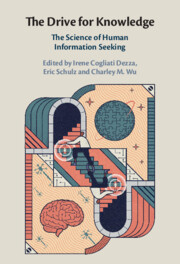Part II - How Do Humans Search for Information?
Published online by Cambridge University Press: 19 May 2022
Summary

- Type
- Chapter
- Information
- The Drive for KnowledgeThe Science of Human Information Seeking, pp. 99 - 192Publisher: Cambridge University PressPrint publication year: 2022

